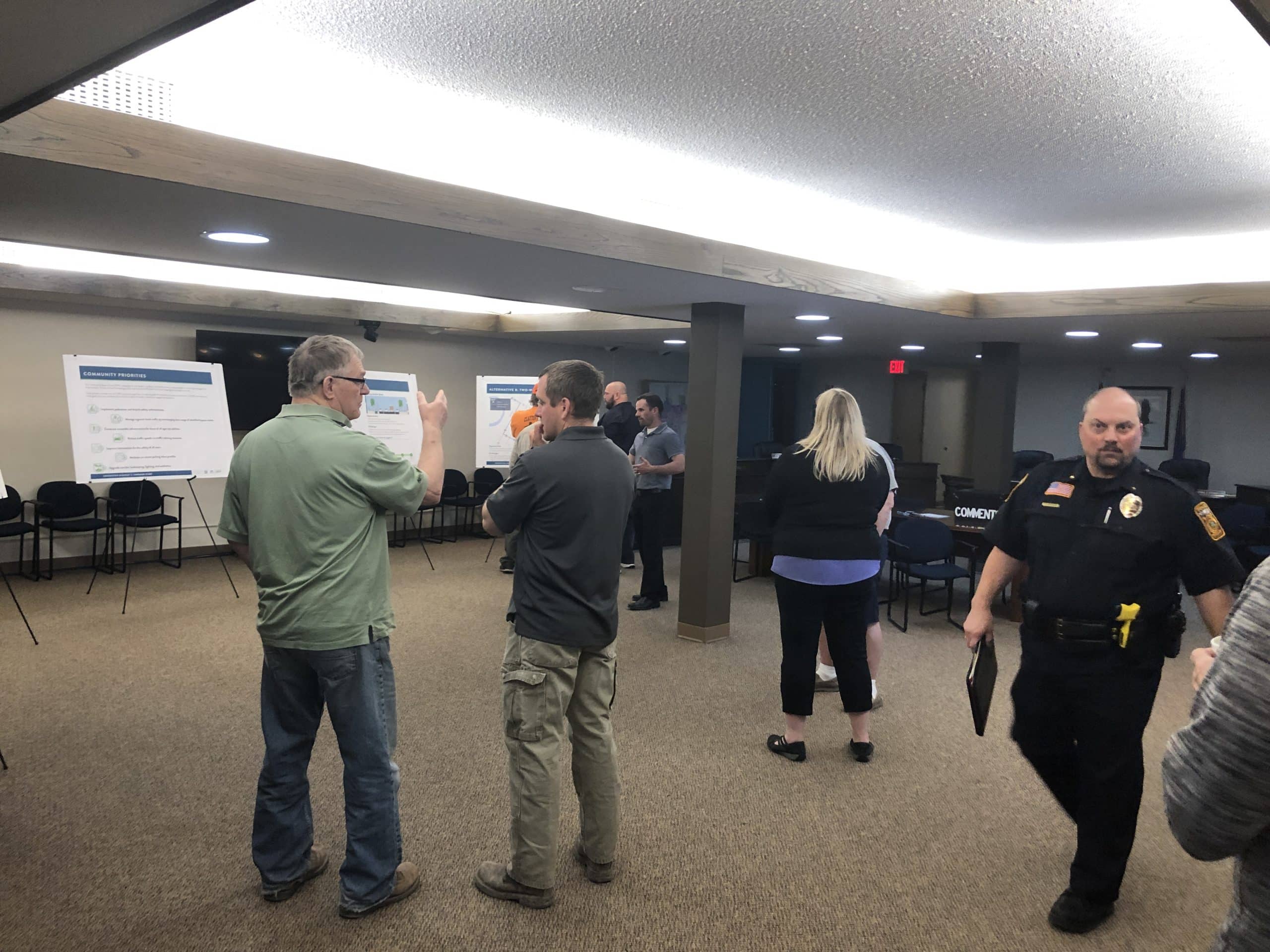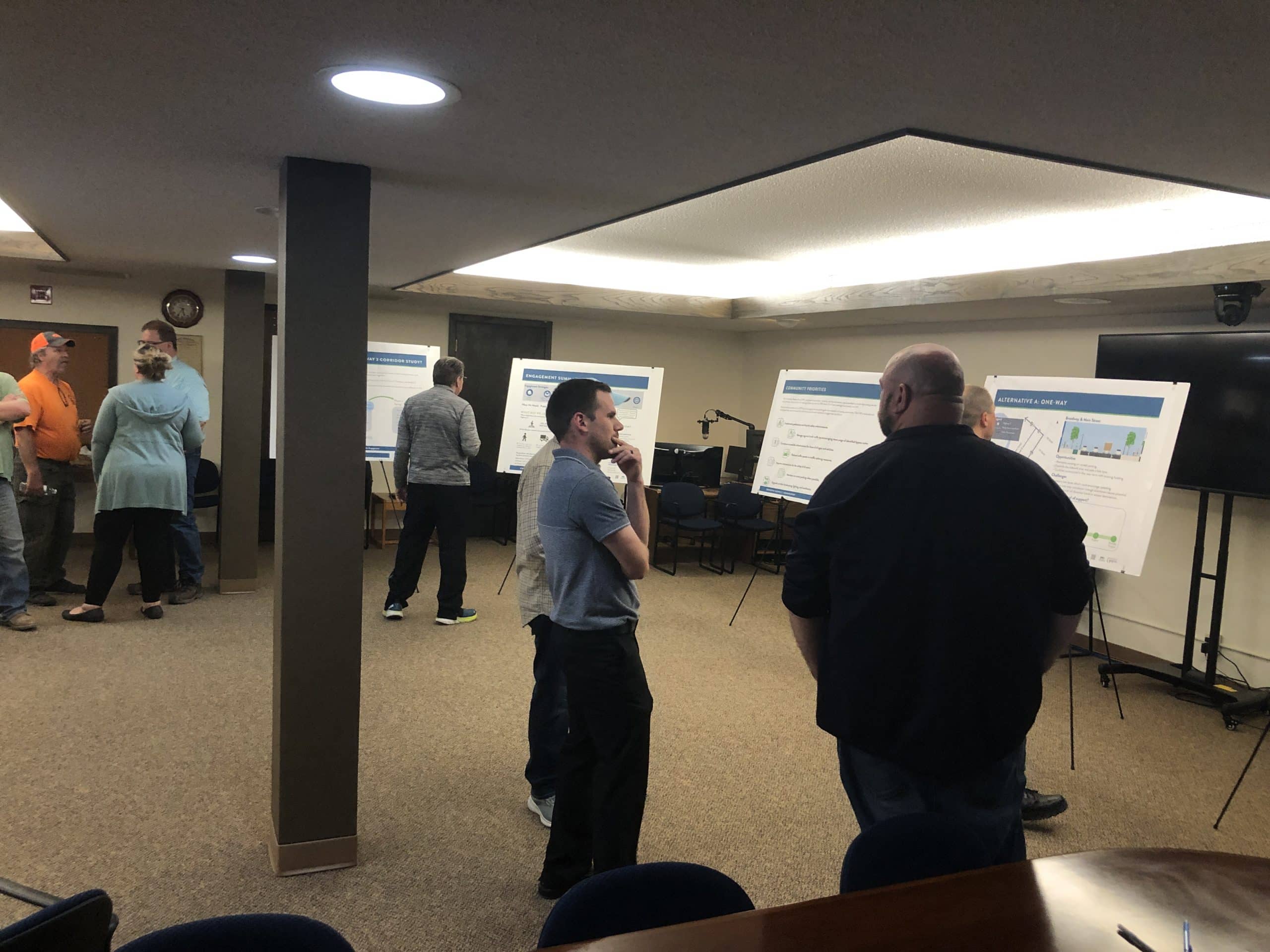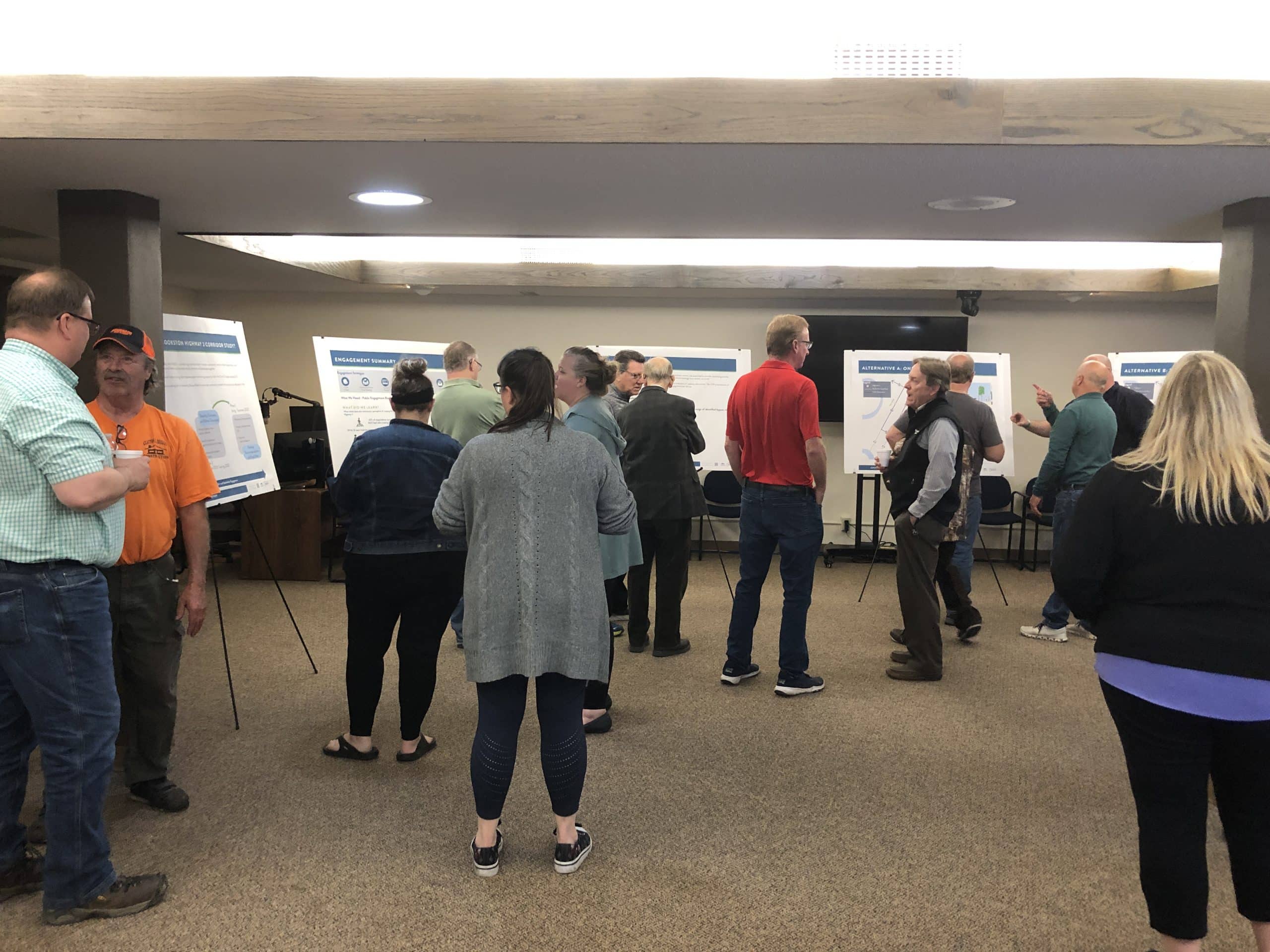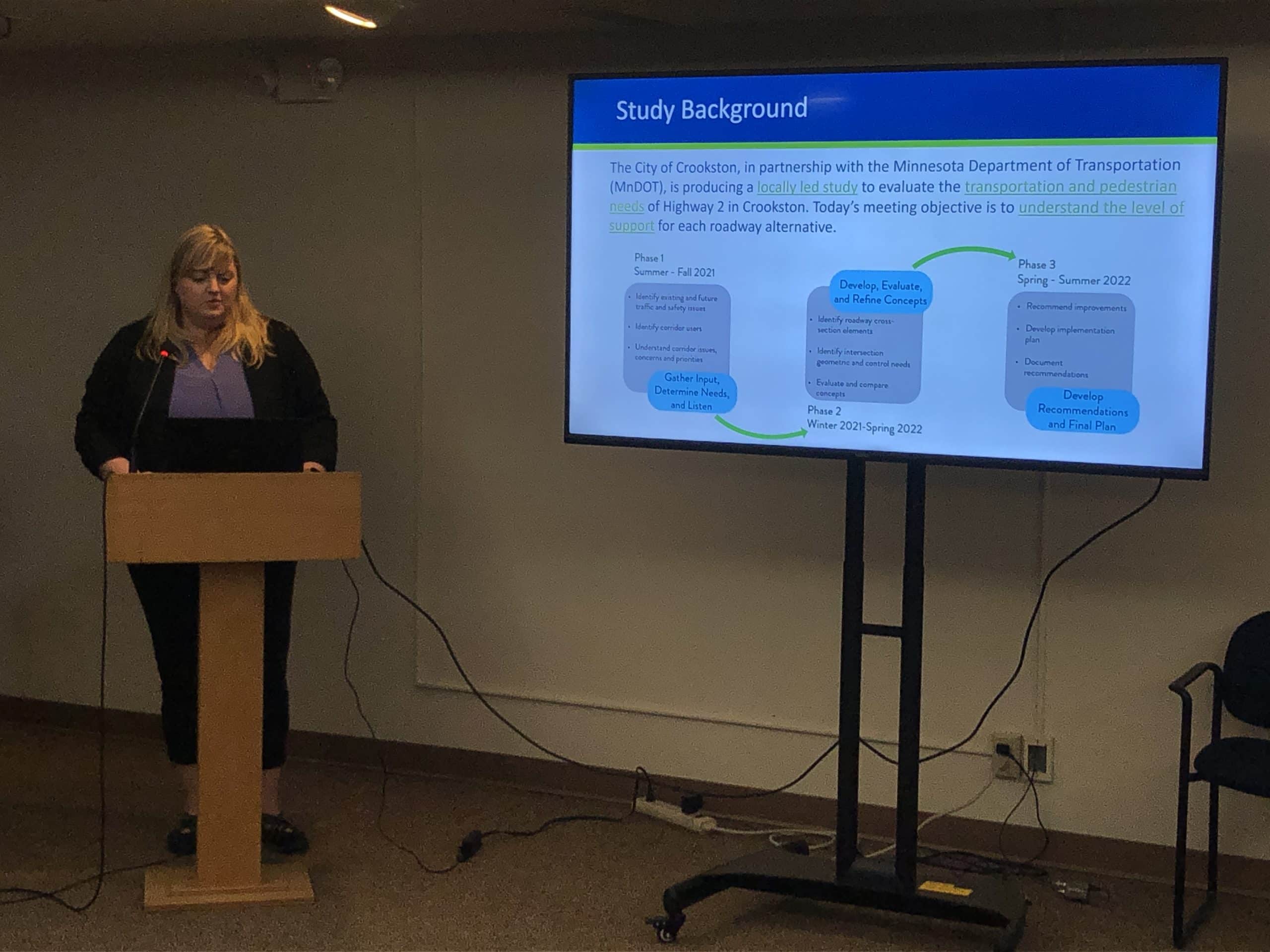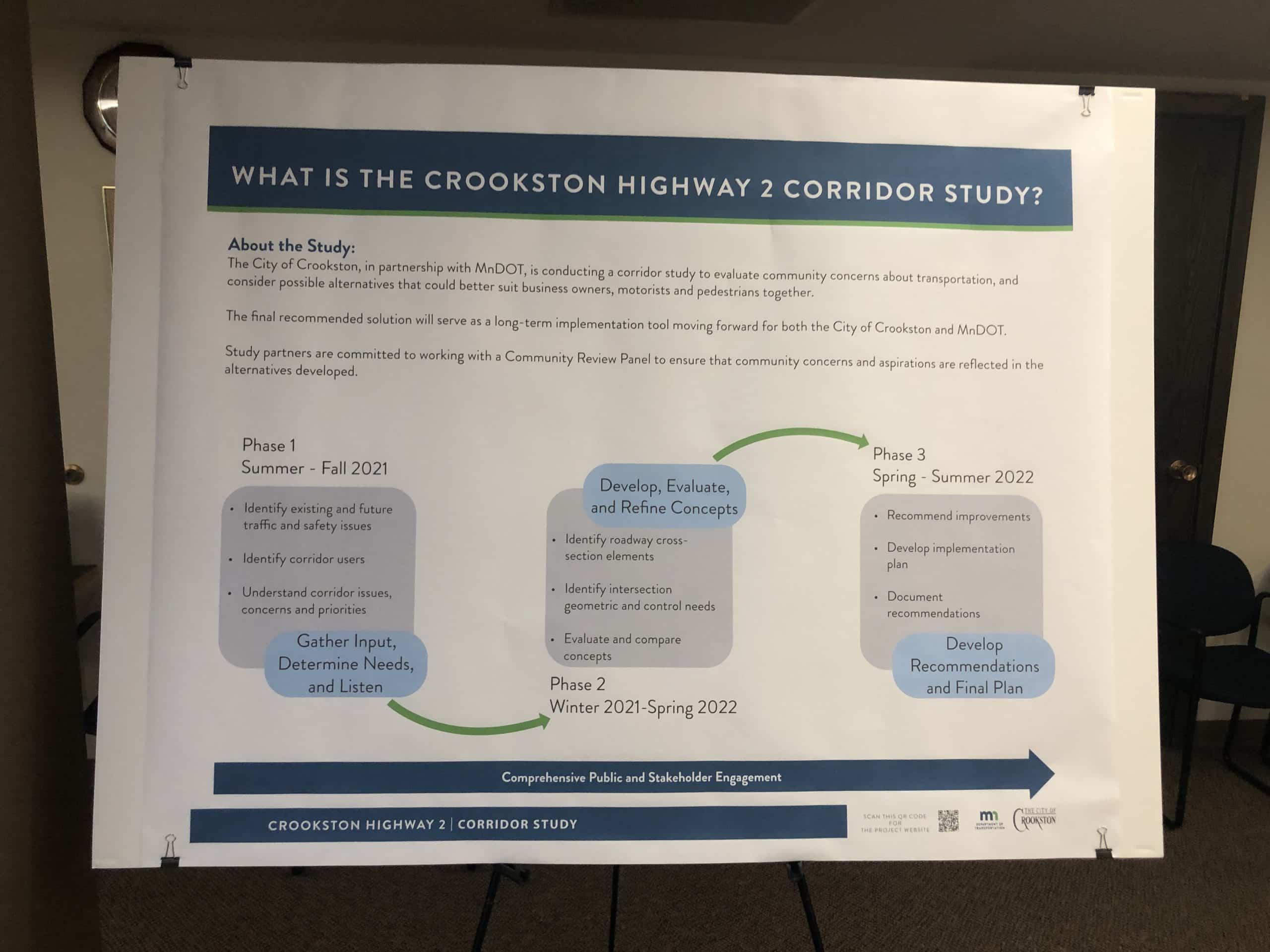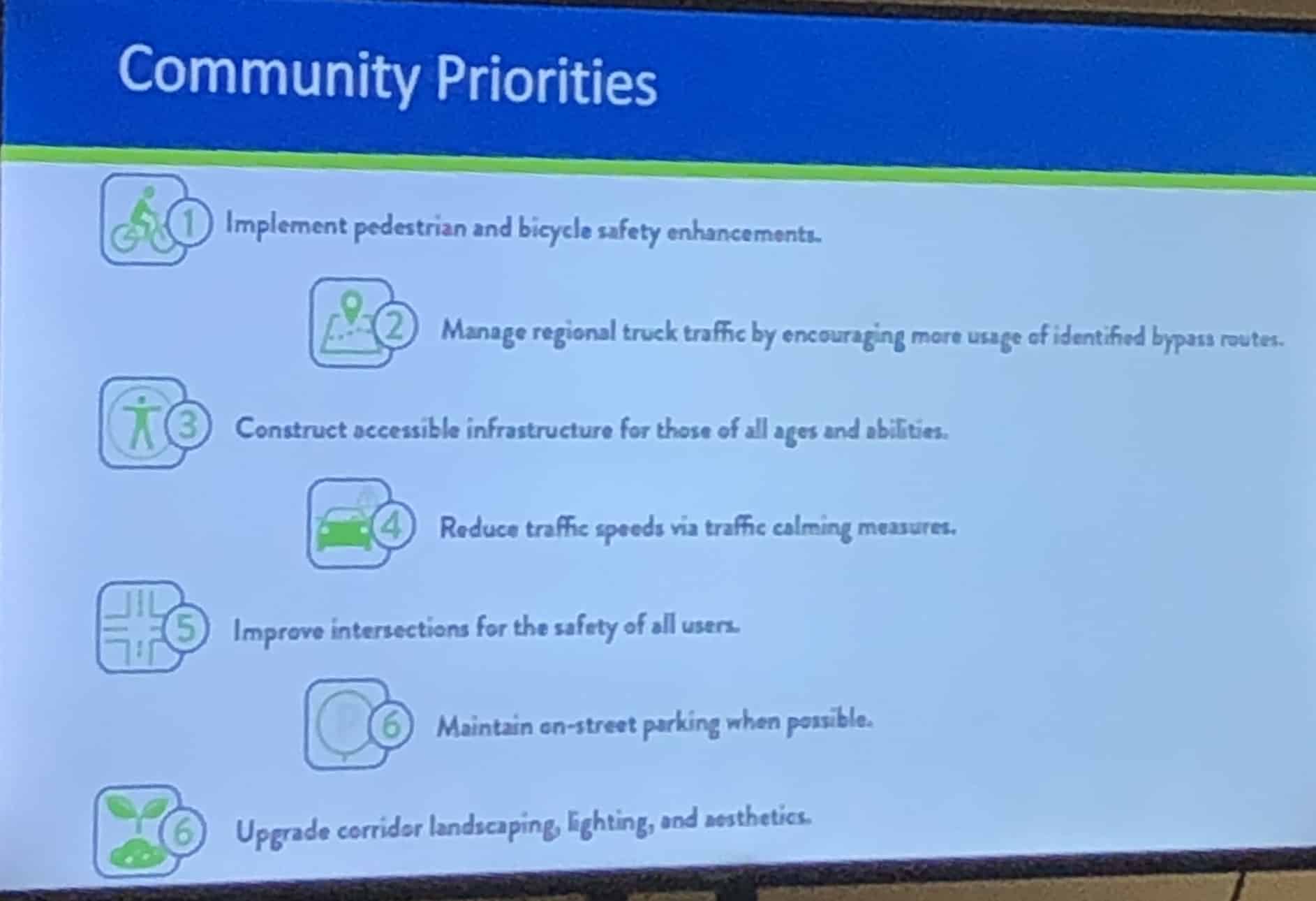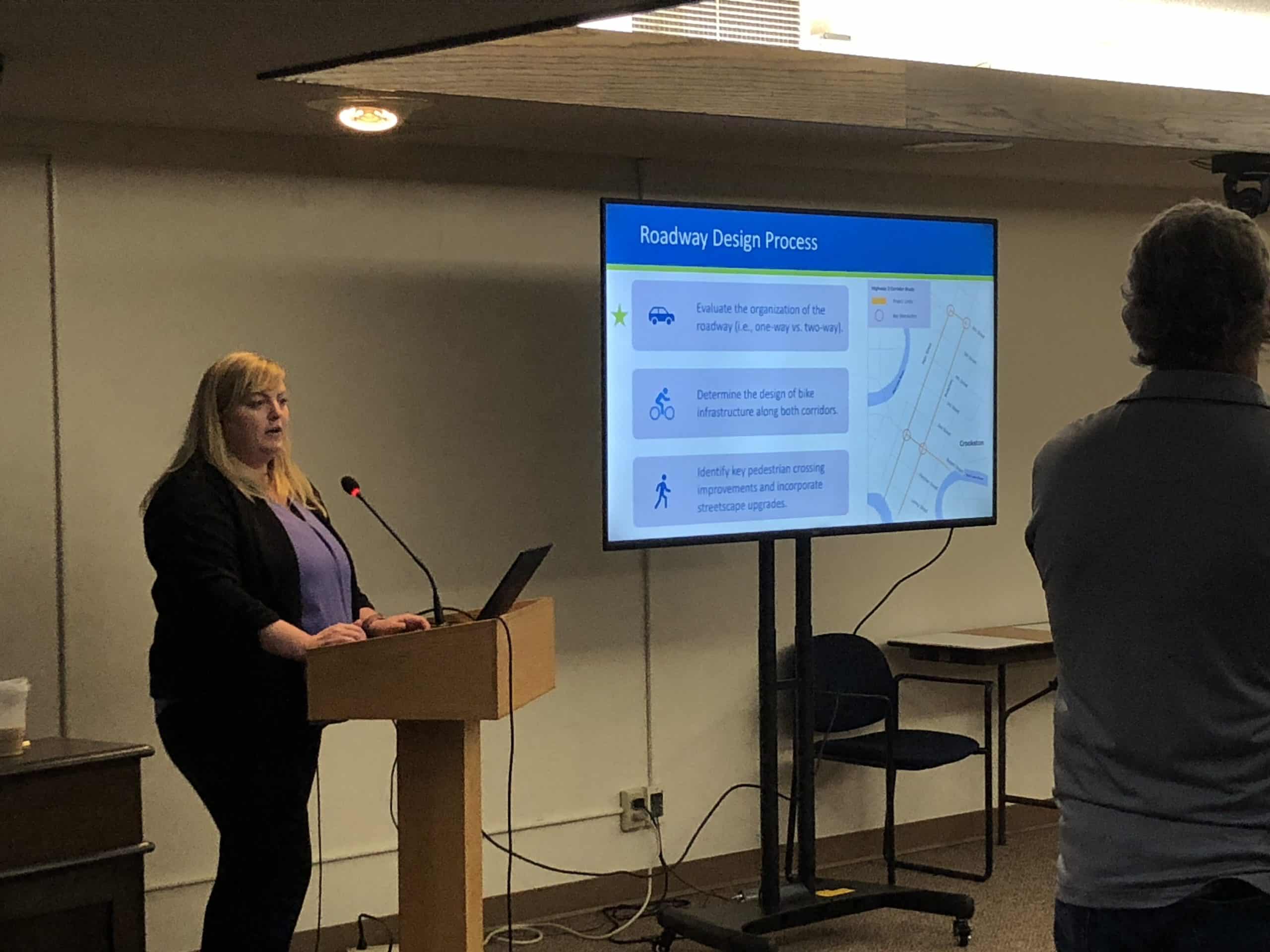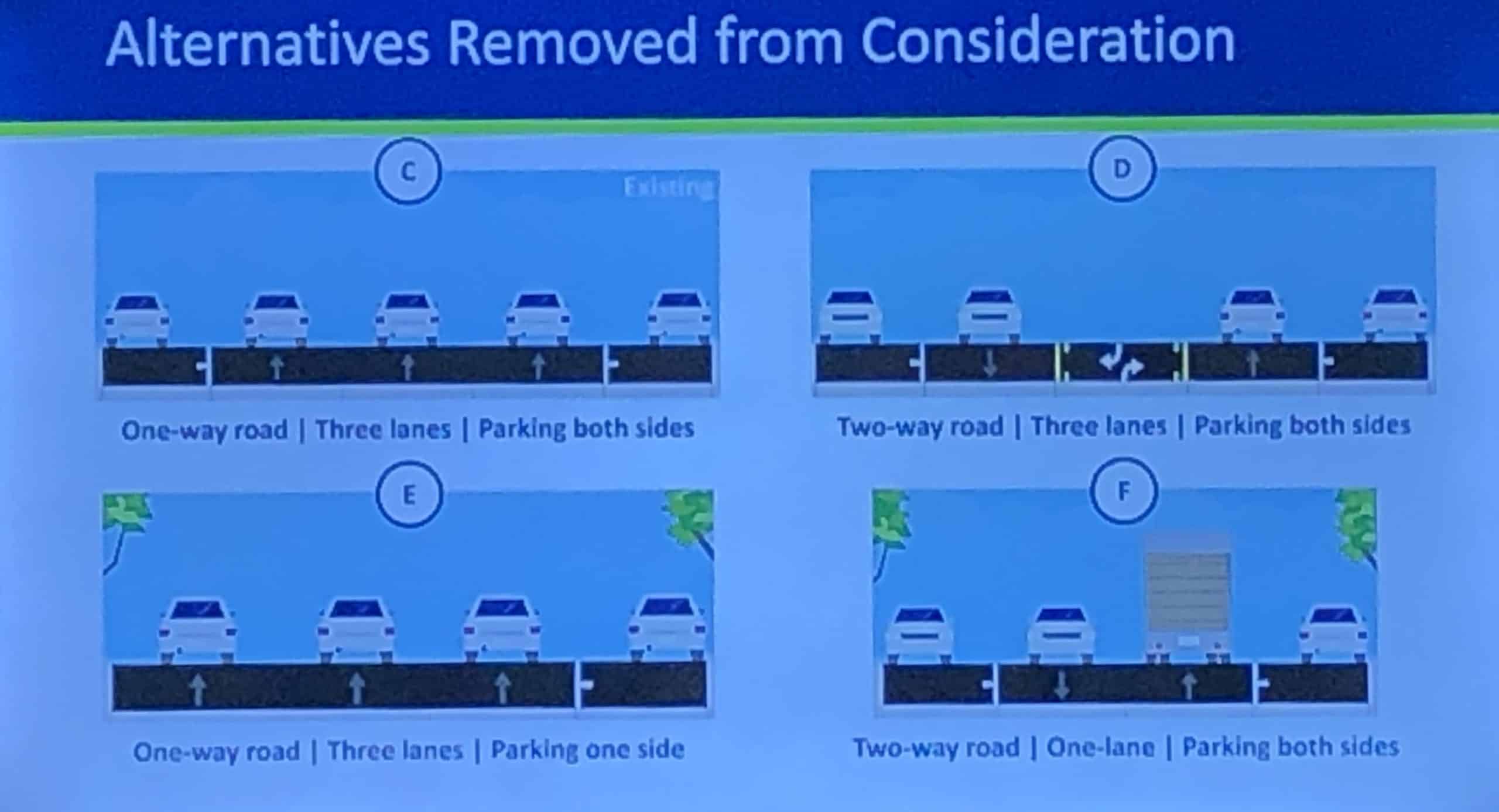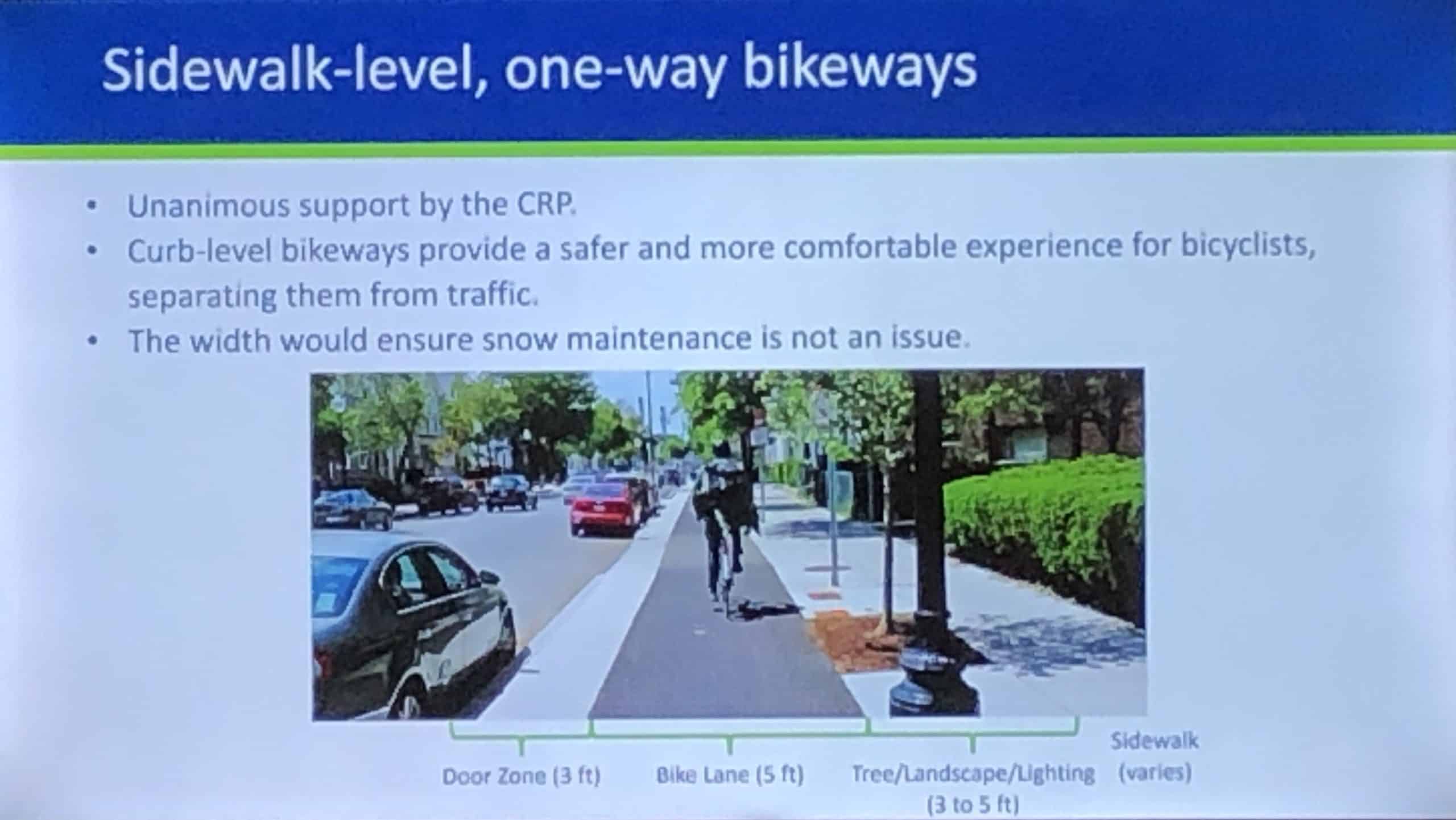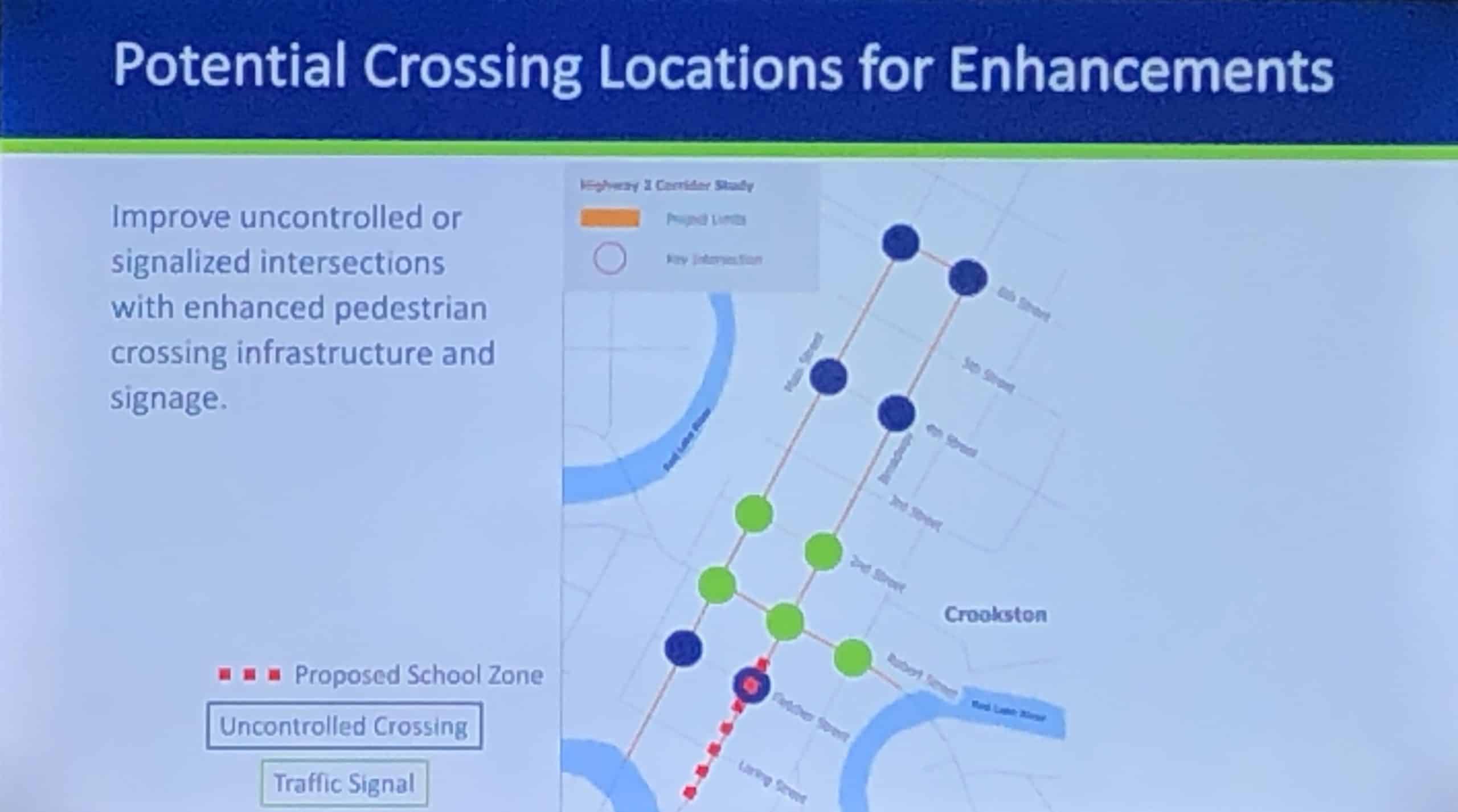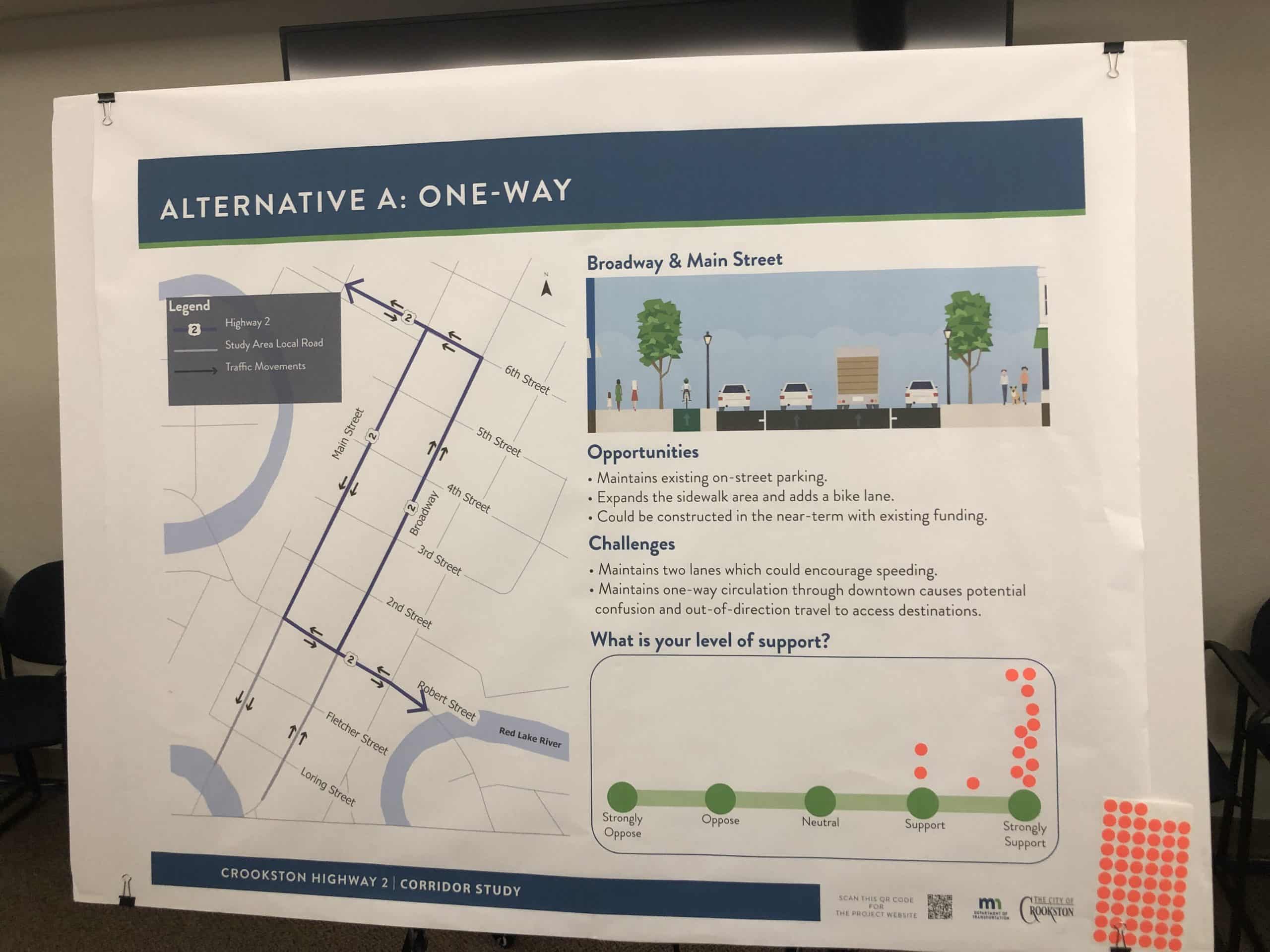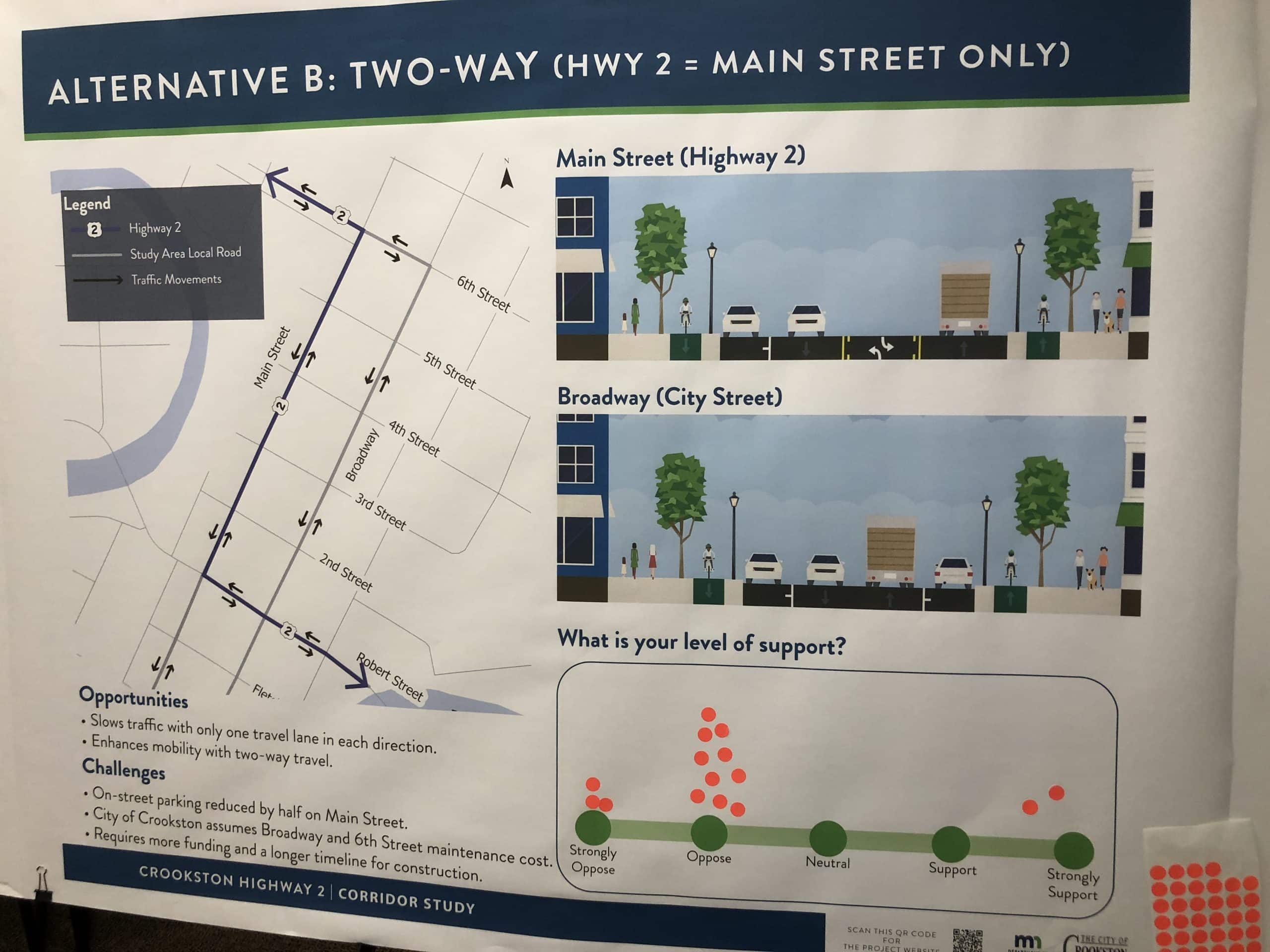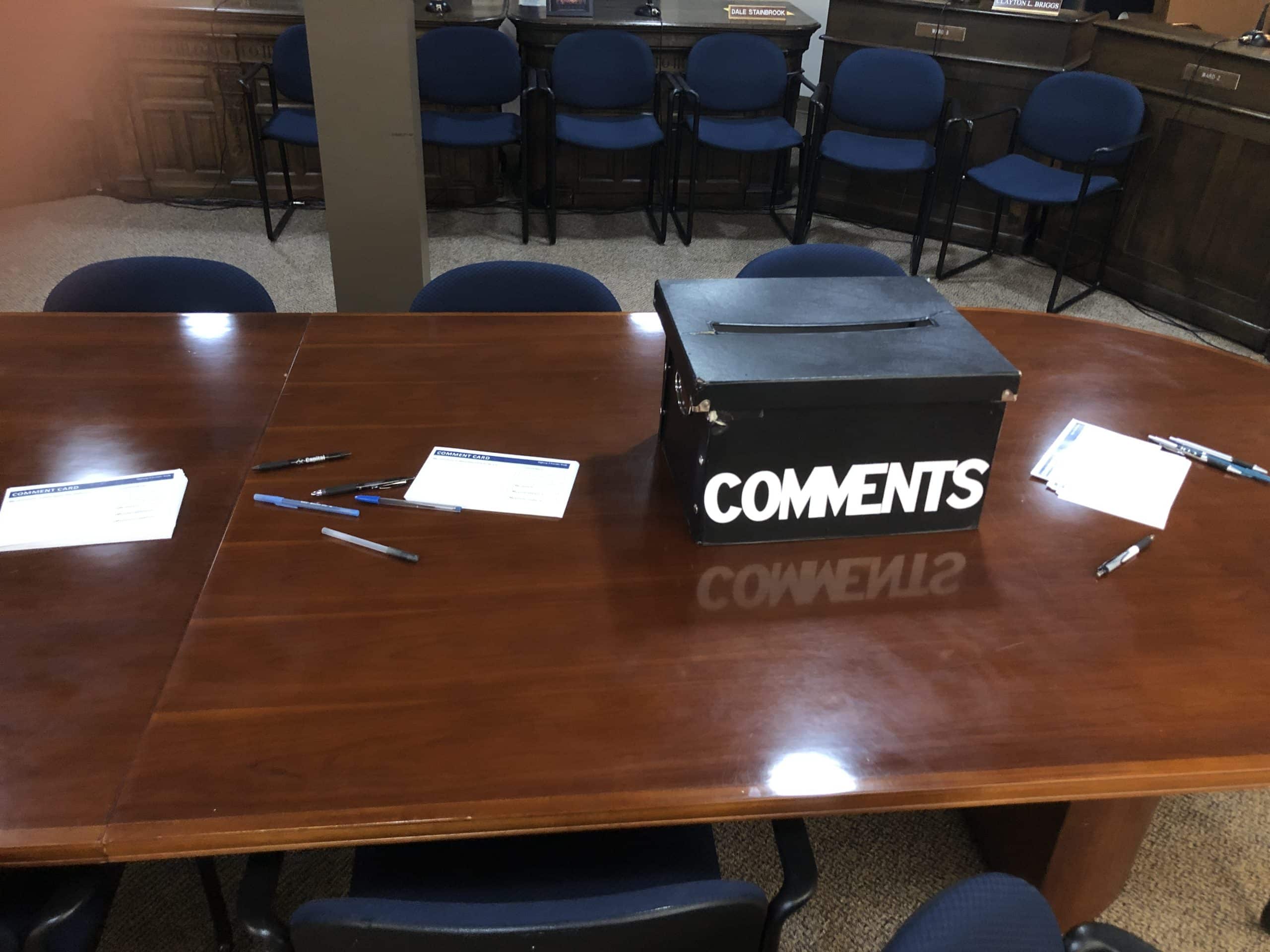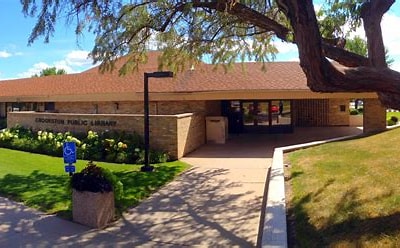The City of Crookston and the Minnesota Department of Transportation (MnDOT) held an Open House in the Crookston City Hall Council Chambers on Tuesday night for the Highway 2 Corridor Study. The Open House was free and open to the public.
The Open House began with the public being allowed to look at five banners that told the layouts of the routes, the pros and cons of each option, the planned schedule for the study, a summary of how they came up with the Study, what they planned to accomplish with the study, and the study’s priorities.
Attendees were allowed to read the banners and discuss them with the Department of Transportation and SRF Consulting Group members. The Open House then received a presentation from SRF Consulting Group Project Manager Molly Stewart, who first explained that they were in the 3rd phase of the project, where they began recommending improvements and developing implementation plans. She then explained why the Study on the Highway Corridor was happening and what they were hoping to add and change to the roadways. “There’s been funding secured to make ADA (Americans with Disabilities Act), as a lot of the sidewalks along the Corridor have really steep slopes, and it’s not good for people with disabilities,” SRF Consulting Group Project Manager Molly Steward explained. “Because of that, MnDOT was planning to come through and reconstruct those sidewalks to be ADA compliant. In order to do that, they have taken some of the roadway and allocated it to the Pedestrian space because they can’t get the crosswalk slopes to work quite right. She also noted that there were safety concerns at many of the intersections along the Corridor due to it having a history of many accidents along with concerns of speeding vehicles and regional truck traffic.”
Stewart then went into the history of the study, with it saying that at a previous open house and online community survey, they learned that many people had trouble crossing the street safely in downtown Crookston. She then explained that the Community Review Panel had met three times before this and identified multiple community priorities from the open house in November and online survey and had created six alternatives to the road before they narrowed it down to two.
REJECTED PLANS-
Steward then explained the reasons why they did not move forward with Options C through F for the Study. Option C was the plan the City is currently using, a three-laned one-way road with parking on both sides. Option D was a two-way road with three lanes that also allowed parking on both sides. She revealed that Options C and D couldn’t be done with the sidewalks sloping the way they did without having to redo the entire roadway and sidewalks if they wanted to make the sidewalks bigger for people to be safer crossing the roads. Option E was a three laned, one-way road with parking only on its right side, but this was scrapped because it did not create a safer environment for pedestrians and the Community Panel wasn’t a big supporter of the three-land idea. Option F was a two-way road with one lane on either side that also allowed parking on both sides of the road. But this was scrapped due to there being insufficient space for turn lanes.
PLANS THAT RECEIVED SUPPORT
Stewart then went into the final options and the pros and cons of making them. Option A keeps the roads one-way routes but narrows the roads down to only two lanes.
The pros to choosing this alternative are that it maintains the existing on-street parking format while also expanding the sidewalk area with an added bike lane. It can also be constructed in the near term with the existing funding going into the study.
The cons for Option A were two lanes wide could encourage speeding and that the one-way circulation through downtown Crookston can cause potential confusion and out-of-direction travel to access destinations.
Option B also turns the roads into two-way traffic lanes, but with only one travel lane available in each direction.
The pros for choosing this alternative is that it slows traffic with only one travel lane in each direction and enhances mobility with two-way travel. The challenges it has are that on-street parking on Main Street would then be cut in half, plus the City of Crookston would have to assume maintenance costs for both Broadway and 6th Street. It would also require more funding and a longer timeline for construction if it were chosen. Stewart then explained what would happen to the option they picked and how the planning would look for its design and safety implementations. “Our next steps are to go through some concept design of what that’s going to look like for the entire Corridor within the Study Area,” Molly Stewart explained. “Then focus on the Intersections and how we can design those to improve pedestrian and bicycle safety along the Corridor.” Stewart also mentioned that both options would include one-way bikeways on both sides of the roads as they were supported unanimously by the Community Review Panel and would provide a safer and more comfortable experience for bicyclists as it would separate them from traffic. Plus, the width of the sidewalk would ensure that snow maintenance would not be an issue as much. She also mentioned that SRF and the City would be evaluating certain intersections to improve uncontrolled or signalized intersections along the corridor.
The attendees were then offered two stickers to put on the two alternative banners to show whether they supported or opposed them. After the attendees made their decisions, the results were overwhelming in favor of Option A. She closed her presentation by informing the attendees of the upcoming steps for the Study. “Our next steps are to meet with our Community Review Panel again in the middle of June, then following that, we will take feedback from that and finalize our study,” Molly Stewart explained. “Then we will go to the City Council and present our findings and ask for approval from them, in the form of a Council Resolution ideally, and that’ll be the end of our study.” If it is, the Study will be completed, and MnDOT will then begin work on designs for the project. Then, they will set up a construction plan and hire a contractor. They then plan to begin work on the road by 2025-2026.
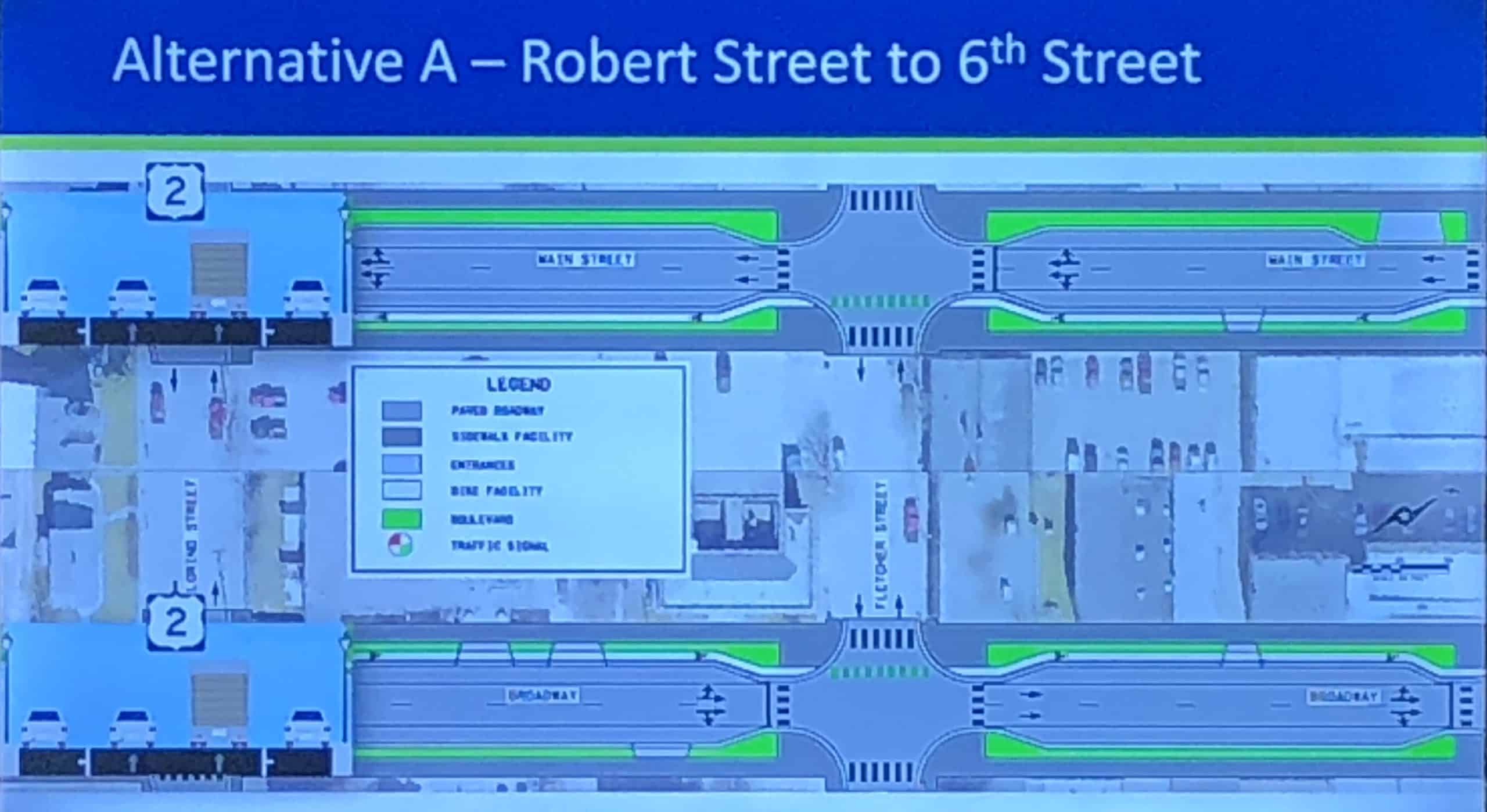
To learn more about the Study, you can go to www.mndot.gov/d2/projects/studies/hwy2-crookston to see the Study’s schedule and a map of the Highway Corridor or submit an online comment about the project.
Pictures of the Open House can be seen below,



